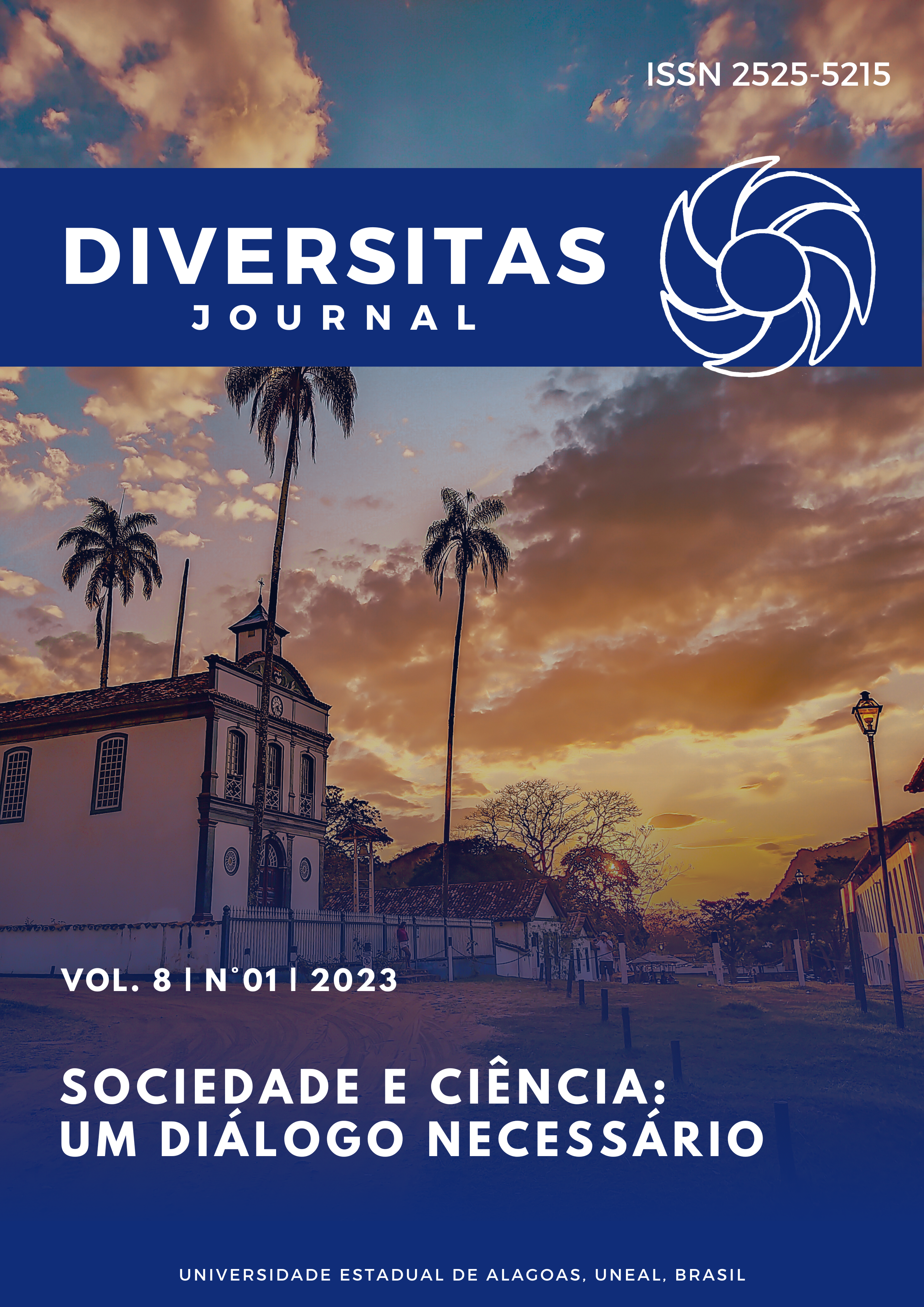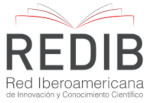THE ROLE OF URBAN MORPHOLOGY IN THE MICROCLIMATE IN A SEMI-ARID CLIMATE CITY
DOI:
https://doi.org/10.48017/dj.v8i1.2368Keywords:
Outdoor Thermal Comfort, Urban Climate, Urban forms, ENVI-met.Abstract
The urbanization process of cities conforms to a typically urban climate, most of the time characterized by the loss of quality of life due to climatic phenomena, such as urban heat islands. The adaptation of the urban form to the local climatic conditions has the potential to compose a sustainable urban environment, with thermal comfort in the open air. The present work took the city of Arapiraca/AL, in order to analyze the relationship between urban morphology and microclimate. From an analytical approach using the ENVI-met software for computer simulation, it was possible to compose four hypothetical models for the hot and dry period. The base model starts from a fraction of the city with a tendency to verticalization, the others vary according to: thermodynamic properties of materials, canyon geometry and vegetation. The results indicated significant thermal effects on urban morphology. The presence of high albedo materials promoted a decrease in air temperature. The orientation of the roads and the geometry of the urban canyon determined the solar access, the number of hours of exposure to direct solar radiation and the use of the winds. The presence of vegetation presented the potential to favor the thermal conditions of the microclimate. It is evident, therefore, the need to insert the study on the urban climate in the urban planning process of cities, in order to promote quality of life for its inhabitants.
Metrics
References
Alchapar, N. L., Pezzuto, C. C. & Correa, E. N. (2018). Parámetros urbanos morfo-materiales y su correlación con las temperaturas de aire en verano. Ambiente Construído, 18 (4), 199-213. http://dx.doi.org/10.1590/s1678-86212018000400301
Alvares, C. A., Stape, J. L., Sentelhas, P. C., Gonçalves, J. L. M. & Sparovek, G. (2013). Köppen’s climate classification map for Brazil. Meteorologische Zeitschrift, 22 (6), 711–728. http://dx.doi.org/10.1127/0941-2948/2013/0507
Baruti, M. M., Johansson, E. & Astrand, J. (2019). Review of studies on outdoor thermal comfort in warm humid climates: challenges of informal urban fabric. Int J. Biometeorol., 63 (10), 1449-1462. https://doi.org/10.1007/s00484-019-01757-3
Bruse, M. & Fleer, H. (1998). Simulating surface-plant-air interactions inside urban environments with a three-dimensional numerical model. Environmental Software and Modelling, 13 (3-4), 373-384. https://doi.org/10.1016/S1364-8152(98)00042-5
Bruse, M. (2022). ENVI-met Website. http://www.envi-met.com
Darbani, E. S., Parapari, D. M., Boland, J. & Sharifi, E. (2021). Impacts of urban form and urban heat island on the outdoor thermal comfort: a pilot study on Mashhad. International Journal of Biometeorology, 65, 1101-1117. https://doi.org/10.1007/s00484-021-02091-3
Davtalab, J., Deyhimi, S.P., Dessi, V., Hafezi, M.R. & Adib, M. (2020). The impactof green space structure on physiological equivalent temperature index in open space. Urban Clim., 31, 100574. https://doi.org/10.1016/j.uclim.2019.100574
De, B. & Mukherjee, M. (2018). Optimisation of canyon orientation and aspect ratio in warm-humid climate: Case of Rajarhat Newtown, India. Urban Climate, 24, 887-920. https://doi.org/10.1016/j.uclim.2017.11.003
Emmanuel, R. (2005). An urban approach to climate sensitive design: Strategies for the tropics. Taylor & Francis. https://doi.org/10.4324/9780203414644
Emmanuel, R. (2016). Urban climate challenges in the tropics. In: Emmanuel, R. (Ed.), Urban climate challenges in the tropics: Rethinking planning and design opportunities. Imperial College Press.
Higueras, E. (1998). Urbanismo bioclimático: Criterios medioambientales en la ordenación de asentamientos. Cuadernos de Investigación Urbanística, Instituto Juan de Herrera.
IBGE. (2010). Instituto Brasileiro de Geografia e Estatística. Alagoas. https://cidades.ibge.gov.br/brasil/al/panorama
Jamei, E., Rajagopalan, P., Seyedmahmoudian, M. & Jamei, Y. (2016). Review on the impact of urban geometry and pedestrian level greening on outdoor thermal comfort. Energy Rev., 54, 1002-1017. https://doi.org/10.1016/j.rser.2015.10.104
Jauregui, E. & Romales, E. (1996). Urban effects on convective precipitation in Mexico City. Atmos. Environ., 30 (20), pp. 3383–3389. http://dx.doi.org/10.1016/1352-2310(96)00041-6.
Johansson, E. (2017). Outdoor thermal comfort in public space in warm-humid Guayaquil, Ecuador. Int. J. Biometeorol. http://dx.doi.org/10.1007/s00484-017-1329-x
Kravcik, M., Pokorný, J., Kohutiar, J., Kovác, M. & Tóth, E. (2008). Water for the Recovery of the Climate- a new Water Paradigm. 1–94. http://www.waterparadigm.org/download/Water_for_the_Recovery_of_the_Climate_A_New_Water_Paradigm.pdf
Krüger, E. L. & Gonzalez, D. E. G. (2016). Impactos da alteração no albedo das superfícies no microclima e nos níveis de conforto térmico de pedestres em cânions urbanos. Ambiente Construído, 16 (3), 89-106. http://dx.doi.org/10.1590/s1678-86212016000300094
Leal, L. P. S. & Barbosa, R. V. R. (2022). Conforto térmico em cânions urbanos verticalizados de cidade litorânea em clima tropical quente e úmido. Encontro Nacional de Tecnologia do Ambiente Construído - ENTAC, 19, 2022, Canela. https://eventos.antac.org.br/index.php/entac/article/view/2063/1893
Lei Municipal nº 2.220 (2001). Código de Obras e Edificações no Município de Arapiraca. https://web.arapiraca.al.gov.br/wp-content/uploads/2019/03/LEI22202001INSTITUIOCODIGODEOBRASEEDIFICAESNOMUNICIPIODEARAPIRACA_1.pdf
Lei Municipal nº 5.593 (2007). Código de Urbanismo e Edificações do Município de Maceió. http://www.sedet.maceio.al.gov.br/servicos/pdf/codigo_edificacoes/00_lei_municipal_5593.pdf
Minella, F. C. O. & Krüger, E. L. (2017). Proposição do índice “fração vegetada” e sua relação com alterações na temperatura do ar e no conforto térmico no período diurno e em situação de verão para Curitiba. Ambiente Construído, 17 (1), 353-371. http://dx.doi.org/10.1590/s1678-86212017000100139
Muniz-Gäal, L. P., Pezzuto, C. C., Carvalho, M. F. H. de & Mota, L. T. M. (2020). Urban geometry and the microclimate of street canyons in tropical climate. Building and Environment, 169. 106547. https://doi.org/10.1016/j.buildenv.2019.106547
Nakata-Osaki, C. M., Souza, L. C. L. de & Rodrigues, D. S. (2016). Impacto da geometria do cânion urbano na intensidade de ilha de calor noturna: análise através de um modelo simplificado adaptado a um SIG. Ambiente Construído, 16 (3), 73-87. http://dx.doi.org/10.1590/s1678-86212016000300093
Nicholson, S. E. (1975). A pollution model for street level air. Atmospheric Environment, 9 (1), 19-31.
Oke, T. R. (1996). Boundary layer climates. (2ª ed.). Routledge.
Oke, T.R. (1988). The urban energy balance. Progress in Physical Geography, 2 (4), 1988, 471- 508.
ONU (2022). Organização das Nações Unidas. Objetivos de Desenvolvimento Sustentável. https://brasil.un.org/pt-br/sdgs
Pereira, J. D. S.; Brandão. L. K. de V. & Barbosa, R. V. R. (2021). Análise da distribuição espacial de áreas verdes urbanas na qualidade térmica em região de clima semiárido. The Journal of Engineering and Exact Sciences, 7, 12019-01, 2021. https://doi.org/10.18540/jcecvl7iss1pp12019-01-09e
R. Ramyar, A. Ramyar, Kialashaki, Y., Bryant, M. & H. Ramyar. (2019). Exploring reconfiguration scenarios of high-density urban neighborhoods on urban temperature-The case of Tehran (Iran). Urban Forestry & Urban Greening, 44, 126398. https://doi.org/10.1016/j.ufug.2019.126398
Romero, M. A. B. (2001). Arquitetura bioclimática do espaço público. Brasília, Editora UnB.
Rosenfeld, A. H., Akbari, H., Bretz, S., Fishman, B.L., Kurn, D.M., Sailor, D.J. & Taha, H. (1995). Mitigation of urban heat islands: materials, utility programs, updates. Energ. Build., 22 (3), 255–265. http://dx.doi.org/10.1016/0378-7788(95)00927-P.
Rui, L., Buccolieri, R., Gao, Z., Gatto, E. & Ding, W. (2019). Study of the effect of green quantity and structure on thermal comfort and air quality in an urban-like residential district by ENVI-met modelling. Build Simul., 12 (2), 183–194. https://doi.org/10.1007/s12273-018-0498-9
Shinzato, P. & Duarte, D. H. S. (2018). Impacto da vegetação nos microclimas urbanos e no conforto térmico em espaços abertos em função das interações solo-vegetação-atmosfera. Ambiente Construído, 18 (2), 197215. http://dx.doi.org/10.1590/s1678-86212018000200250
Silva, M. F. da, & Barbosa, R. V. R. (2022). Regime de ventos em cidades de diferentes regiões geo-gráficas de Alagoas a partir de dados meteorológicos recentes. Revista Brasileira de Clima-tologia, 31(18), 509–538. https://doi.org/10.55761/abclima.v31i18.15606
Silva, M. F. da. (2019). Estratégias bioclimáticas para seis cidades alagoanas: contribuições para a adequação da arquitetura ao clima local. [Dissertação de mestrado, Universidade Federal de Alagoas]. Repositório Institucional da UFAL. http://www.repositorio.ufal.br/handle/riufal/5791
Tork, L. D., Tibiriçá, A. C. G. & Tibiriçá, Á. M. B. (2017). Análise da ventilação natural conforme planos diretores: resultados de pesquisa em Belém, PA. Ambiente Construído, 17 (1), 329-351. http://dx.doi.org/10.1590/s1678-86212017000100138
Torres, S. C. (2017). Forma e Conforto: estratégias para (re)pensar o adensamento construtivo urbano a partir dos parâmetros urbanísticos integrados à abordagem bioclimática. [Tese de Doutoramento, Universidade Federal de Pernambuco]. Repositório Digital da UFPE. https://repositorio.ufpe.br/handle/123456789/22459
Vasilikou, C. & Nikolopoulou, M. (2019). Outdoor thermal comfort for pedestrians in movement: thermal walks in complex urban morphology. Int J Biometeorol (Special Issue:Subjective approaches to thermal perception), 64, 277-291. https://doi.org/10.1007/s00484-019-01782-2
Xu, M., Hong, B., Mi, J. & Yan, S. (2018). Outdoor thermal comfort in an urban park during winter in cold regions of China. Sustain Cities Soc., 43, 208–220. https://doi.org/10.1016/j.scs.2018.08.034
Yahia, M.W., Johansson, E., Thorsson, S., Lindberg, F. & Rasmussen, M.I. (2017). Effect of urban design on microclimate and thermal comfort out-doors in warm-humid Dar es Salaam, Tanzania. Int J Biometeorol, 62, 373–385. https://doi.org/10.1007/s00484-017-1380-7
Yang, S.-R. & Lin, T.-P. (2016). An integrated outdoor spaces design procedure to relieve heat stress in hot and humid regions. Building and Environment, 99. http://dx.doi.org/10.1016/j.buildenv.2016.01.001
Yıldırım, M. (2020). Shading in the outdoor environments of climate-friendly hot and dry historical streets: the passageways of Sanliurfa, Turkey. Environ Impact Assess Rev., 80, 106318. https://doi.org/10.1016/j.eiar.2019.106318
Downloads
Published
How to Cite
Issue
Section
License
Copyright (c) 2023 Luana Karla de Vasconcelos Brandão, Ricardo Victor Rodrigues Barbosa

This work is licensed under a Creative Commons Attribution 4.0 International License.
The Diversitas Journal expresses that the articles are the sole responsibility of the Authors, who are familiar with Brazilian and international legislation.
Articles are peer-reviewed and care should be taken to warn of the possible incidence of plagiarism. However, plagiarism is an indisputable action by the authors.
The violation of copyright is a crime, provided for in article 184 of the Brazilian Penal Code: “Art. 184 Violating copyright and related rights: Penalty - detention, from 3 (three) months to 1 (one) year, or fine. § 1 If the violation consists of total or partial reproduction, for the purpose of direct or indirect profit, by any means or process, of intellectual work, interpretation, performance or phonogram, without the express authorization of the author, the performer, the producer , as the case may be, or whoever represents them: Penalty - imprisonment, from 2 (two) to 4 (four) years, and a fine. ”















.png)




